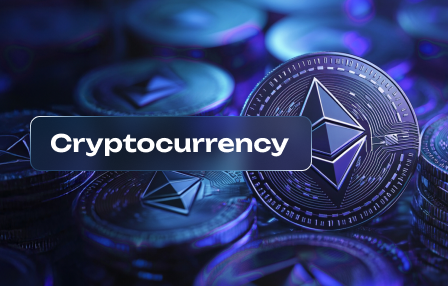How to tell if a token is a scam
June 1, 2025
To ensure trustworthiness in your cryptocurrency investments, performing an analysis of token fundamentals is crucial. Start by scrutinizing the whitepaper for transparency regarding project goals and technology. Evaluate the team behind the project–verify their credentials and past experiences. A lack of identifiable developers can be a red flag, suggesting potential fraud.
The risk associated with investing in unknown tokens increases if they exhibit signs of manipulation or unrealistic promises. Monitor social media channels and community discussions for sentiment; scams often rely on hype rather than substantive progress. A genuine project typically fosters open dialogue and constructive feedback from its users.
Security features also play a significant role in identifying scam tokens. Investigate whether the project has undergone audits by reputable firms and assess its code for vulnerabilities. Projects that lack these security assurances may expose investors to greater risks, making them prime targets for malicious actors.
Analyzing Project Whitepapers
Thoroughly examine the project whitepaper for clarity and transparency. A well-structured document should clearly outline the project’s goals, technology, and use case for the token. Look for detailed descriptions of the problem being solved and how the proposed solution works.
Check for technical feasibility. The whitepaper should include a realistic roadmap, outlining milestones with corresponding timelines. Any vague or unrealistic projections can be significant red flags indicating potential fraud.
Assess the team behind the project. A credible whitepaper usually provides biographies of key team members, including their experience in cryptocurrency and relevant industries. Lack of information or anonymous contributors raises security concerns.
Evaluate the tokenomics section closely. This part must explain token distribution, utility, and incentives for holders. Be wary of projects that allocate a large percentage to founders or advisors without clear justification, as this can indicate elevated risk of a scam.
Review community engagement and external validation. Authentic projects often have active communities discussing their vision and progress on platforms like GitHub or social media. Absence of community support or negative sentiment can signal potential issues with the project.
Finally, consider any legal disclaimers present in the whitepaper. Legitimate projects typically clarify compliance with regulations and avoid making overly ambitious promises about returns. Lack of such details could indicate an attempt to obscure risks associated with investing in their token.
Checking Team Backgrounds
Verify the identities of team members behind a cryptocurrency project. Conduct thorough investigations using social media, LinkedIn profiles, and previous work history to assess their credibility and experience in the industry.
Look for any red flags such as anonymity or lack of verifiable information. A transparent team usually shares details about their past projects, successes, and failures, contributing to their trustworthiness. If team members have a history of involvement in scams or fraudulent activities, this significantly increases the risk associated with the token.
Analyze any public statements made by the team regarding their expertise and vision. Consistent messaging across platforms can indicate reliability. Additionally, check for community engagement; active participation in discussions often reflects a commitment to the project’s success.
Utilize platforms like GitHub to review contributions from developers on open-source projects. This can provide insight into their skills and dedication. If the development activity is minimal or absent, consider this a potential security issue.
Engage with online forums and communities where users discuss the project. Genuine feedback from other investors can reveal hidden concerns or highlight positive attributes that may not be immediately obvious through official channels.
Lastly, cross-reference team members with reputable sources in crypto journalism to validate claims about their background. An informed analysis of these factors will help mitigate risks when investing in new tokens.
Investigating Community Activity
Examine the community engagement surrounding a token. A strong, active community often indicates trustworthiness, while sparse or toxic interactions may signal potential risks.
- Social Media Presence: Analyze platforms like Twitter, Telegram, and Reddit. Look for regular updates, responsive admins, and community discussions. A lack of interaction can be a red flag.
- Community Growth: Track the number of followers and participants over time. Rapid growth without genuine engagement often suggests artificial inflation.
- User Feedback: Assess reviews and testimonials from users. Positive experiences can indicate legitimacy; however, be wary of overly enthusiastic endorsements that may mask underlying issues.
- Moderation Practices: Evaluate how well the community is moderated. Effective moderation prevents spam and scams while fostering productive discussions.
Monitor for recurring complaints about security issues or unresolved grievances within the community. Such patterns can reveal critical red flags that warrant further investigation.
- Suspicious Behavior: Identify any coordinated efforts to suppress negative feedback or promote false narratives about the token’s value and safety.
- Bounty Programs: Investigate if the project uses bounty programs to incentivize positive reviews. While they are common, excessive reliance on them can be a warning sign.
An in-depth analysis of community activity provides vital insights into a token’s reliability and potential risks associated with investment.
Using Token Audit Tools
Implement token audit tools for a comprehensive analysis of cryptocurrency projects. These tools help identify potential scams by examining the underlying code, tokenomics, and transaction patterns. Look for platforms like CertiK, MythX, and Hacken to assess security vulnerabilities in smart contracts.
Prioritize audits that provide detailed reports highlighting red flags such as suspicious ownership percentages, unverified team members, or unusual transaction activity. A well-audited token will have transparent findings available publicly, enhancing trustworthiness among investors.
Incorporate multiple audit sources to cross-reference findings. If discrepancies arise between different tools or if an audit report is missing entirely, treat it as a significant risk indicator. Continuous monitoring of tokens post-launch is essential; utilize tools that track changes in contract code or governance parameters over time.
Ensure the audit tool you choose has a solid reputation within the cryptocurrency community. User reviews and feedback can be invaluable in assessing past performance and reliability in identifying fraud cases.
Finally, integrate insights from these audits with other due diligence methods such as analyzing project whitepapers and team backgrounds to form a holistic view of the project’s legitimacy.



